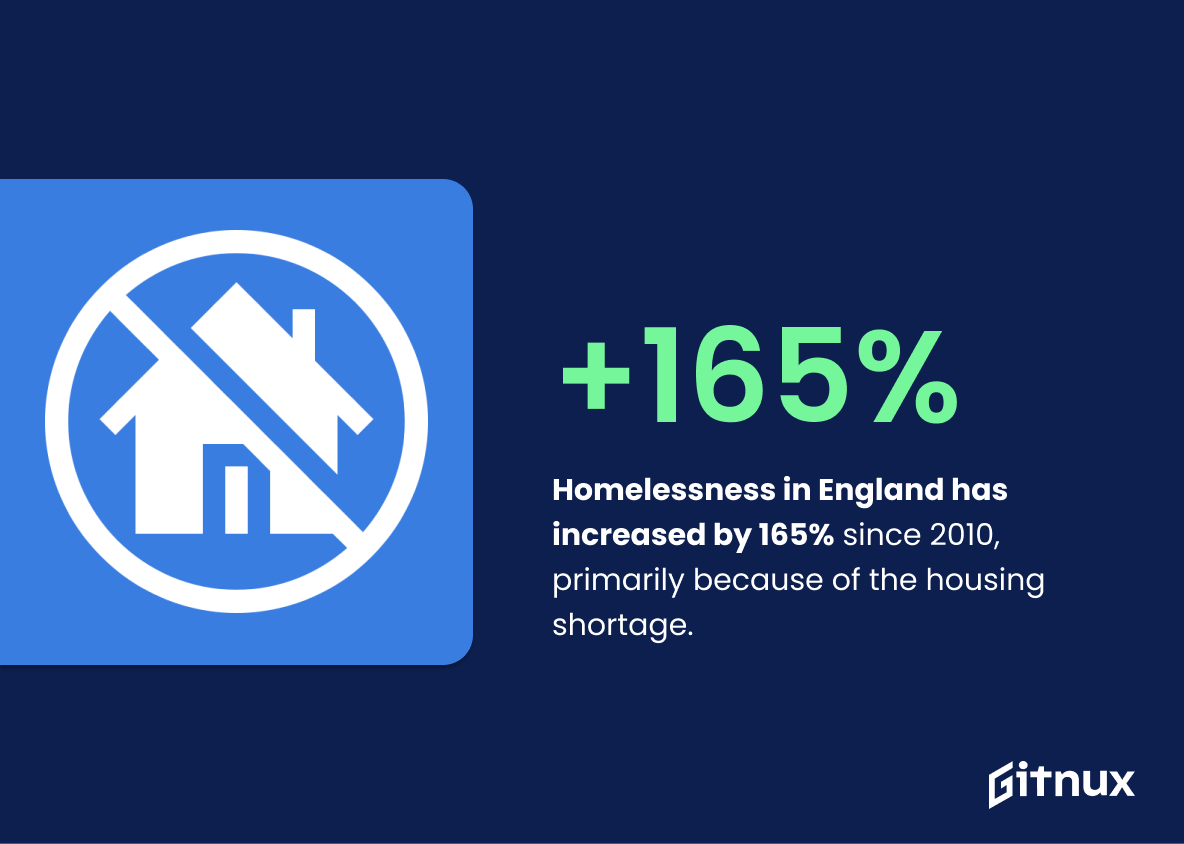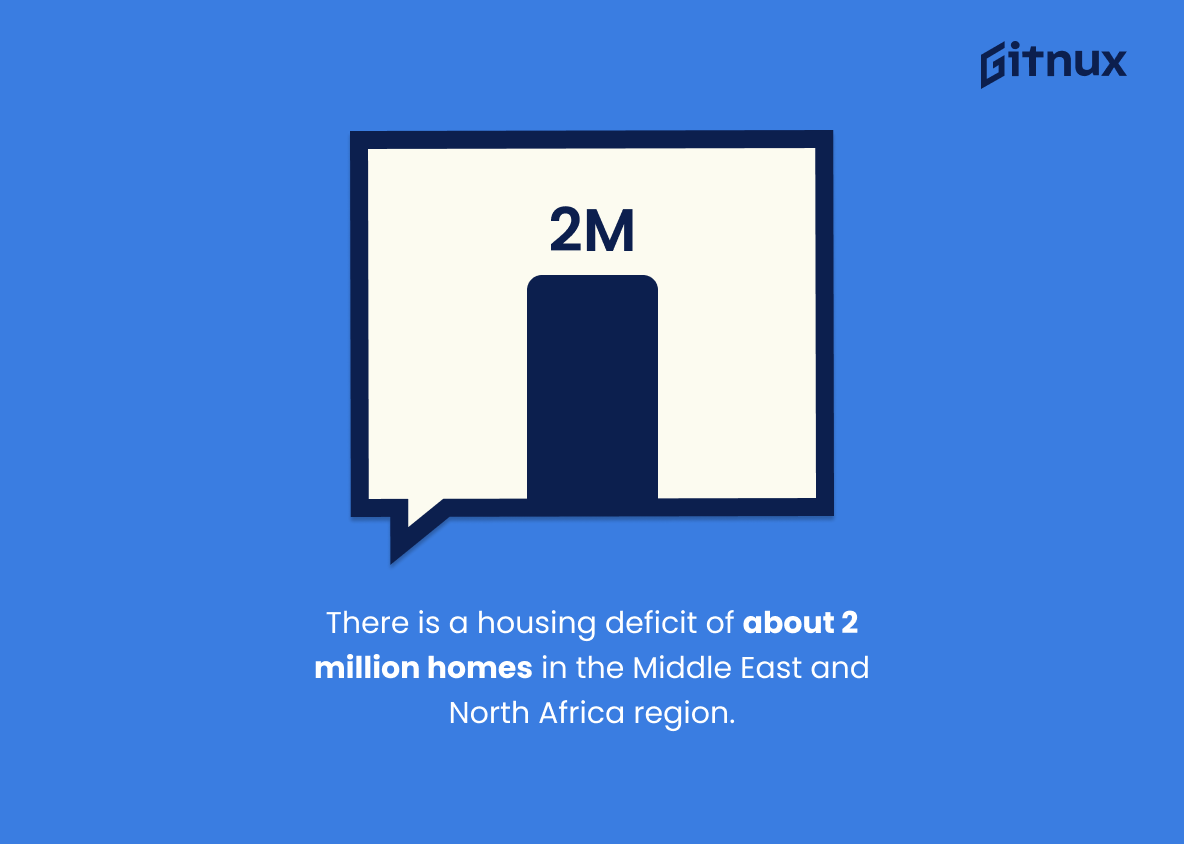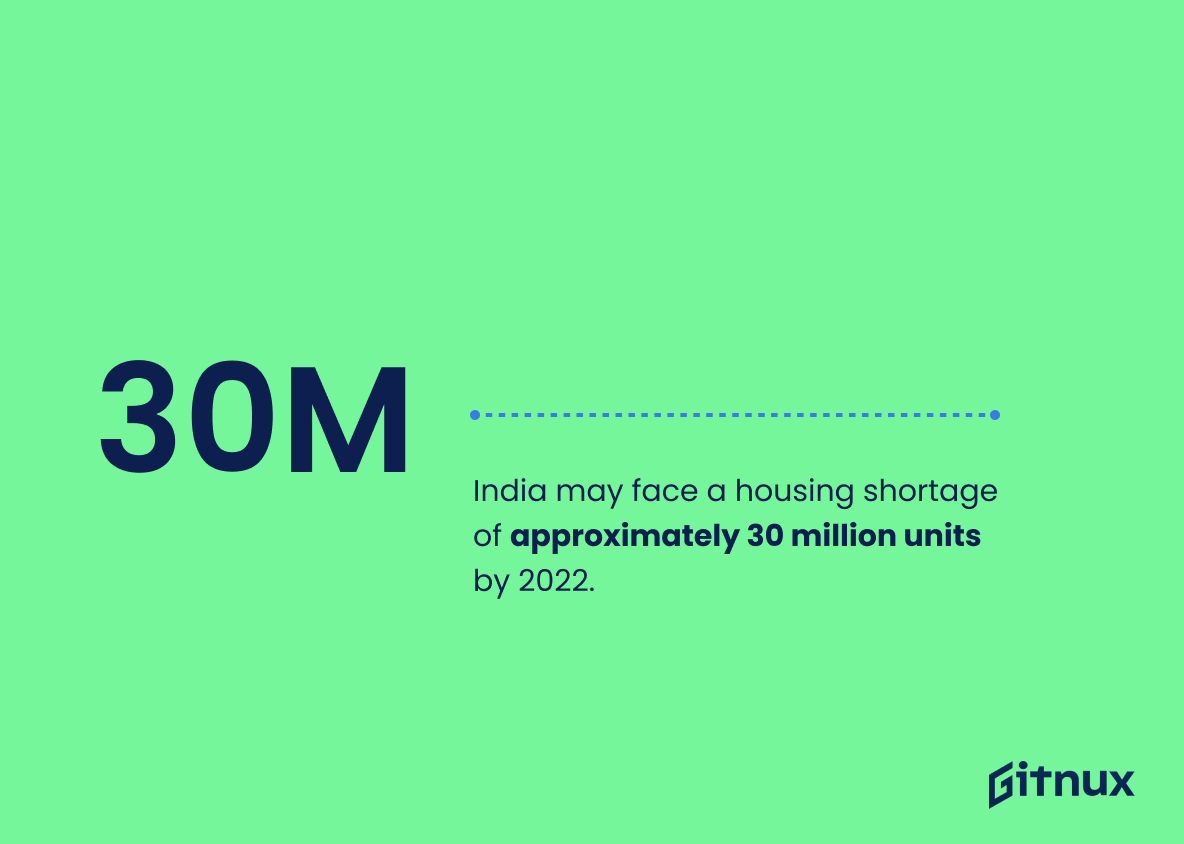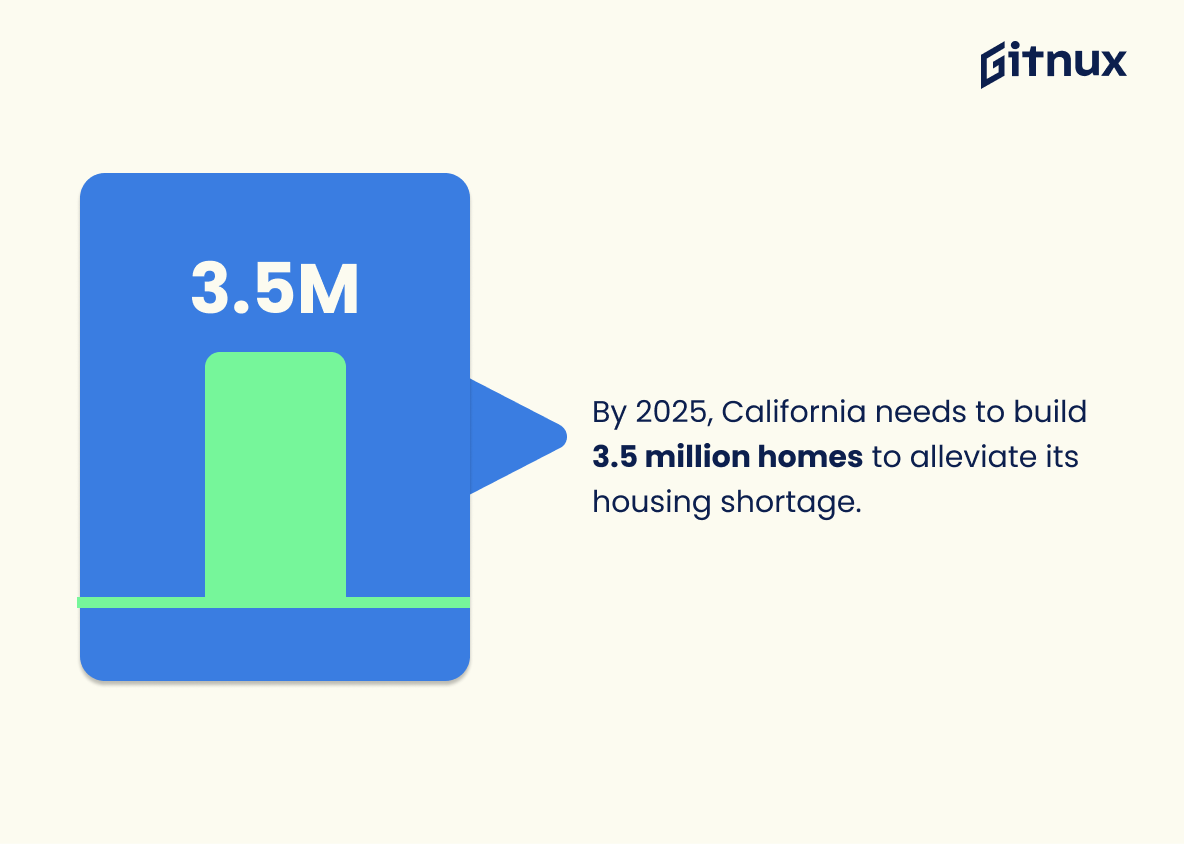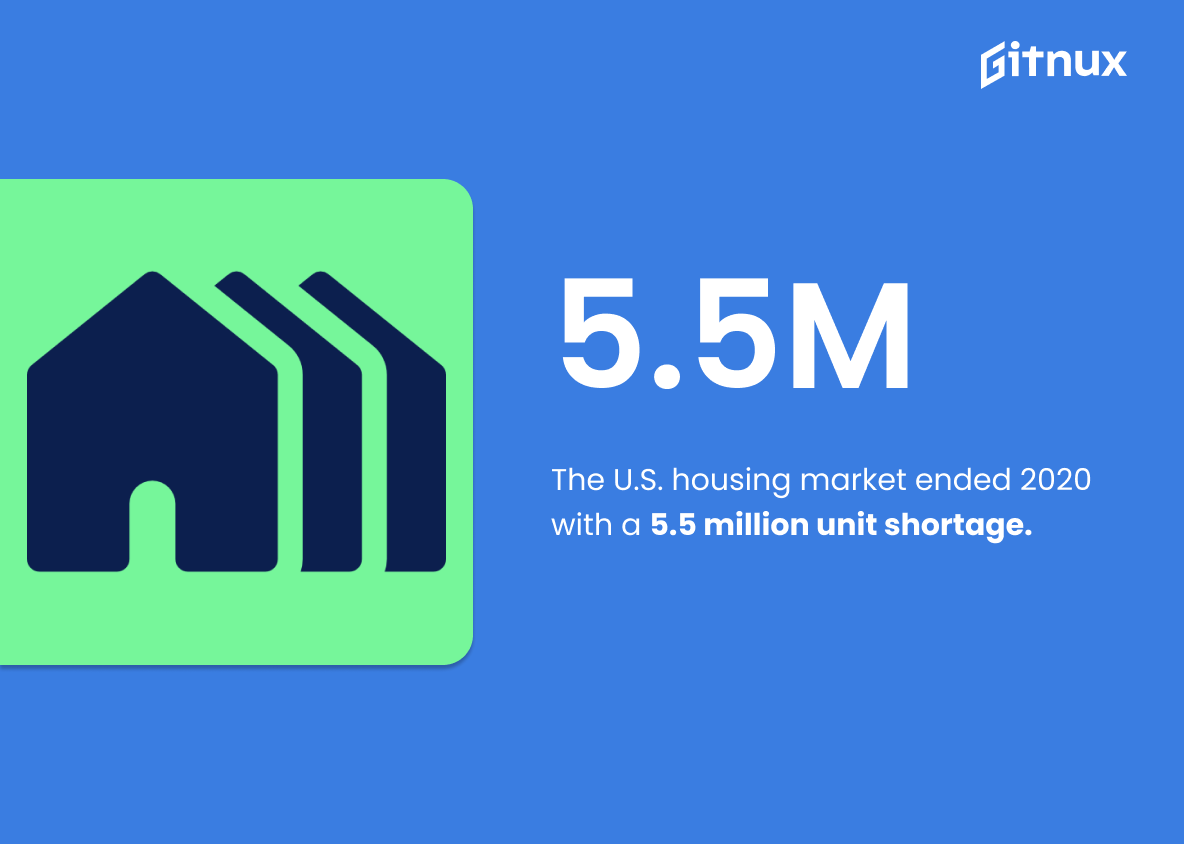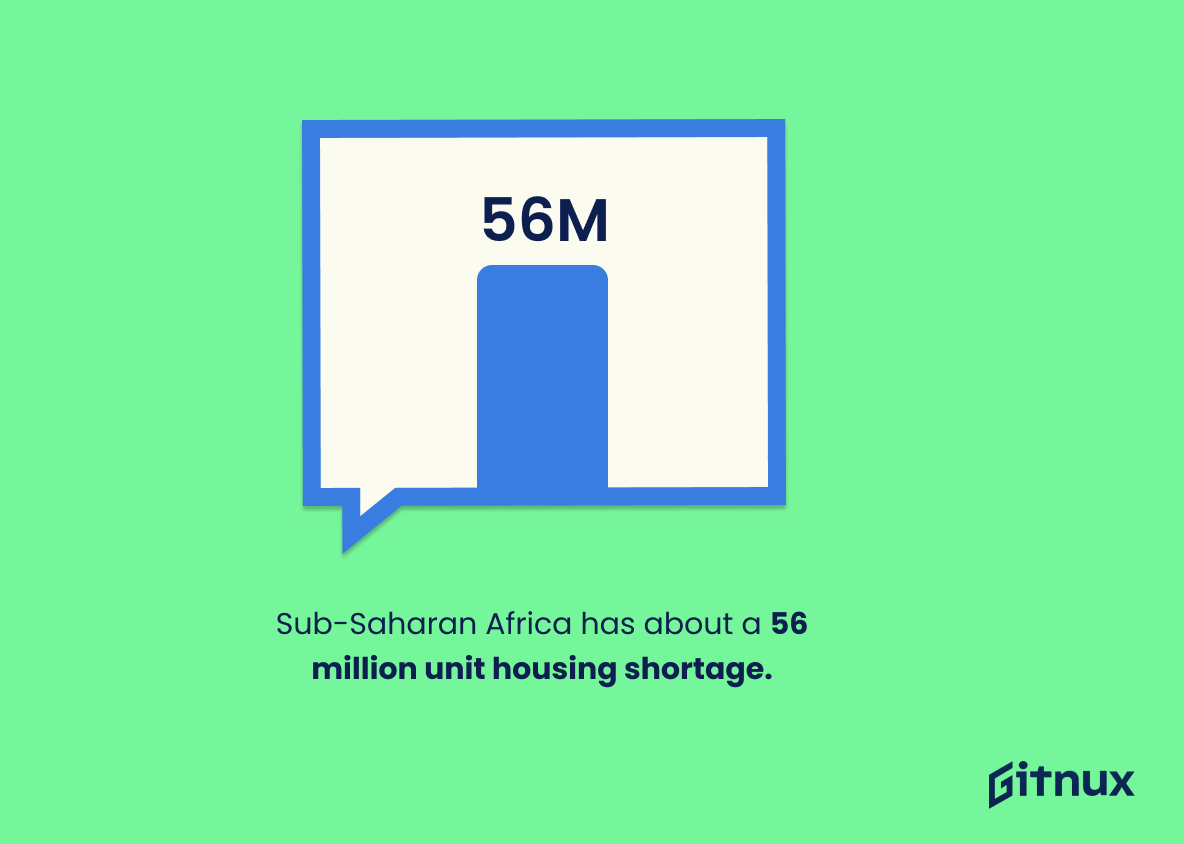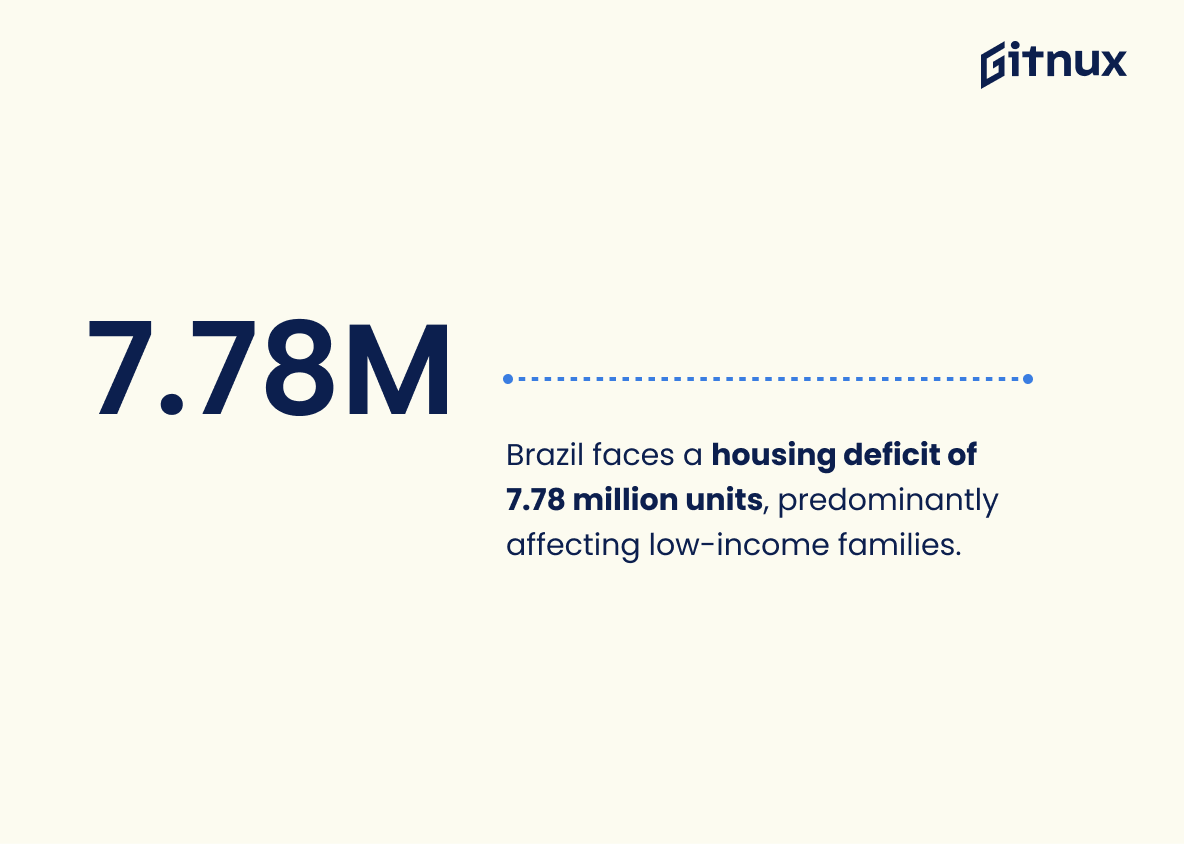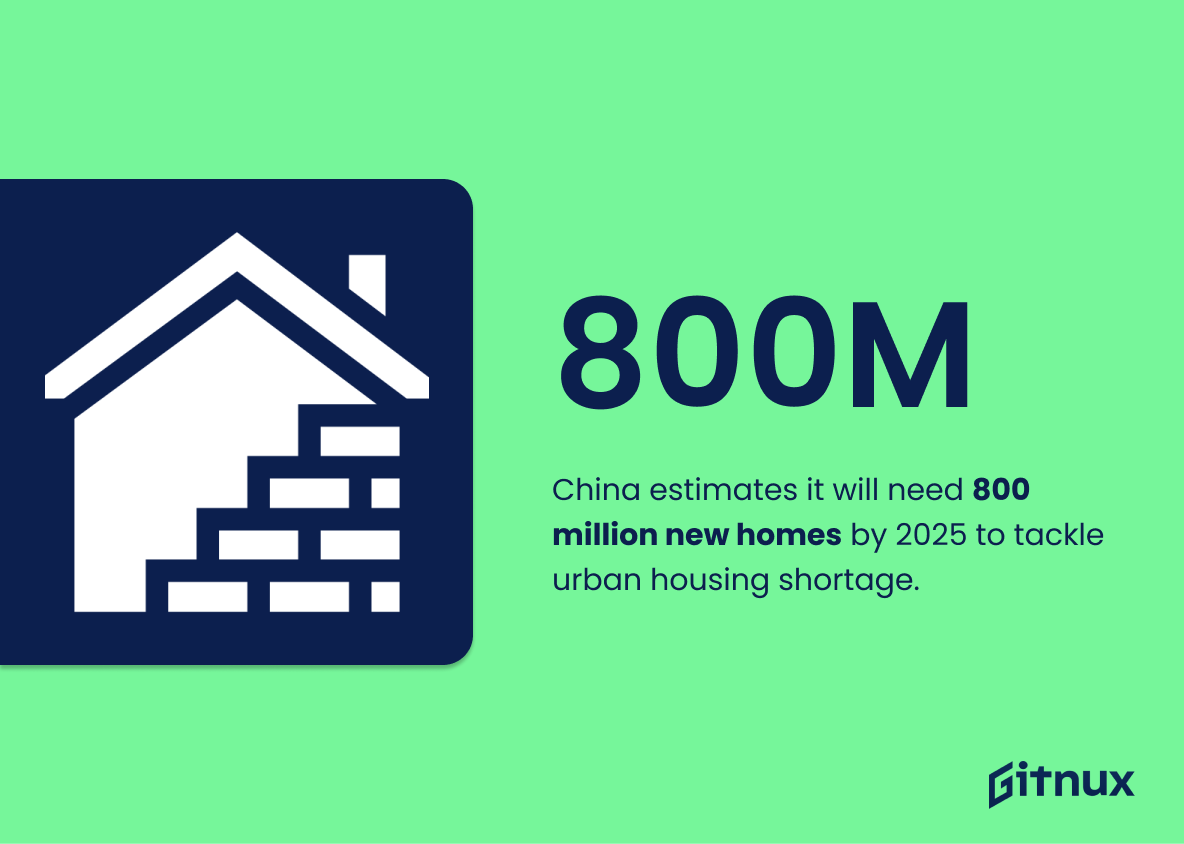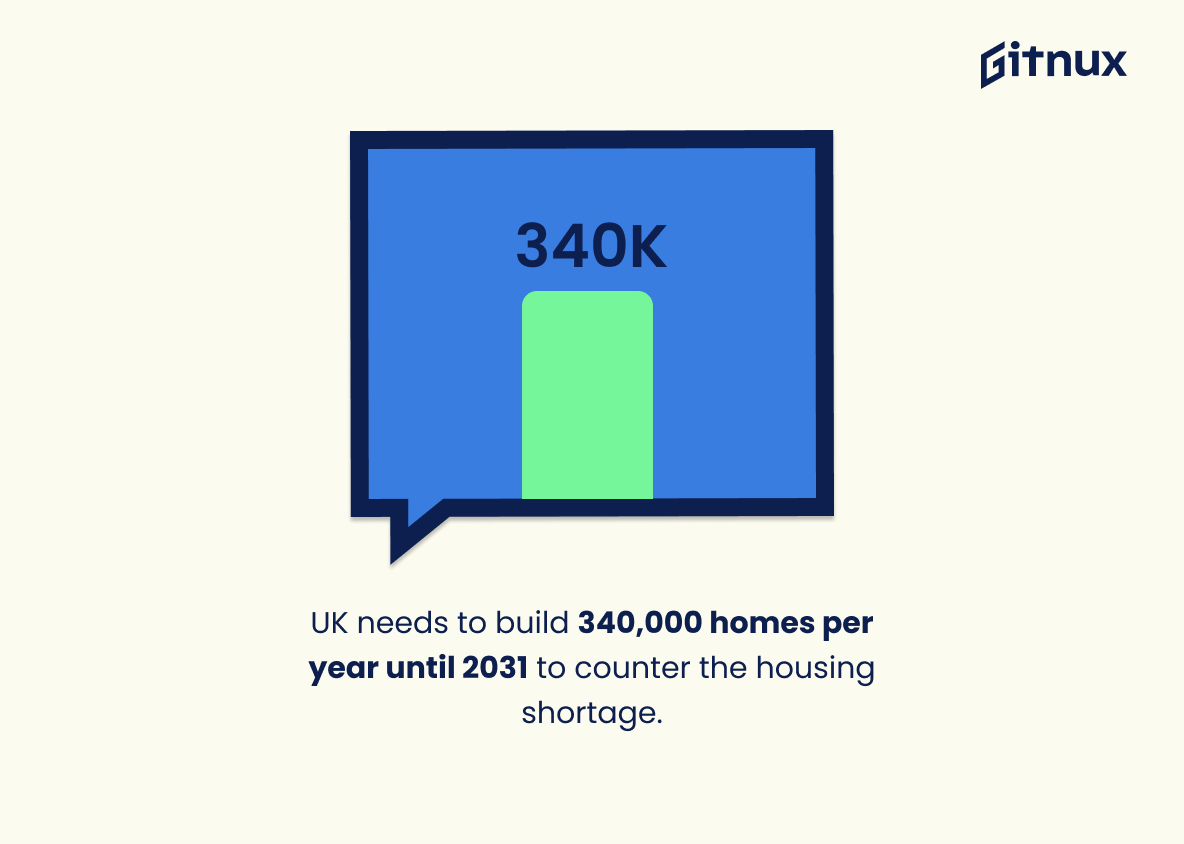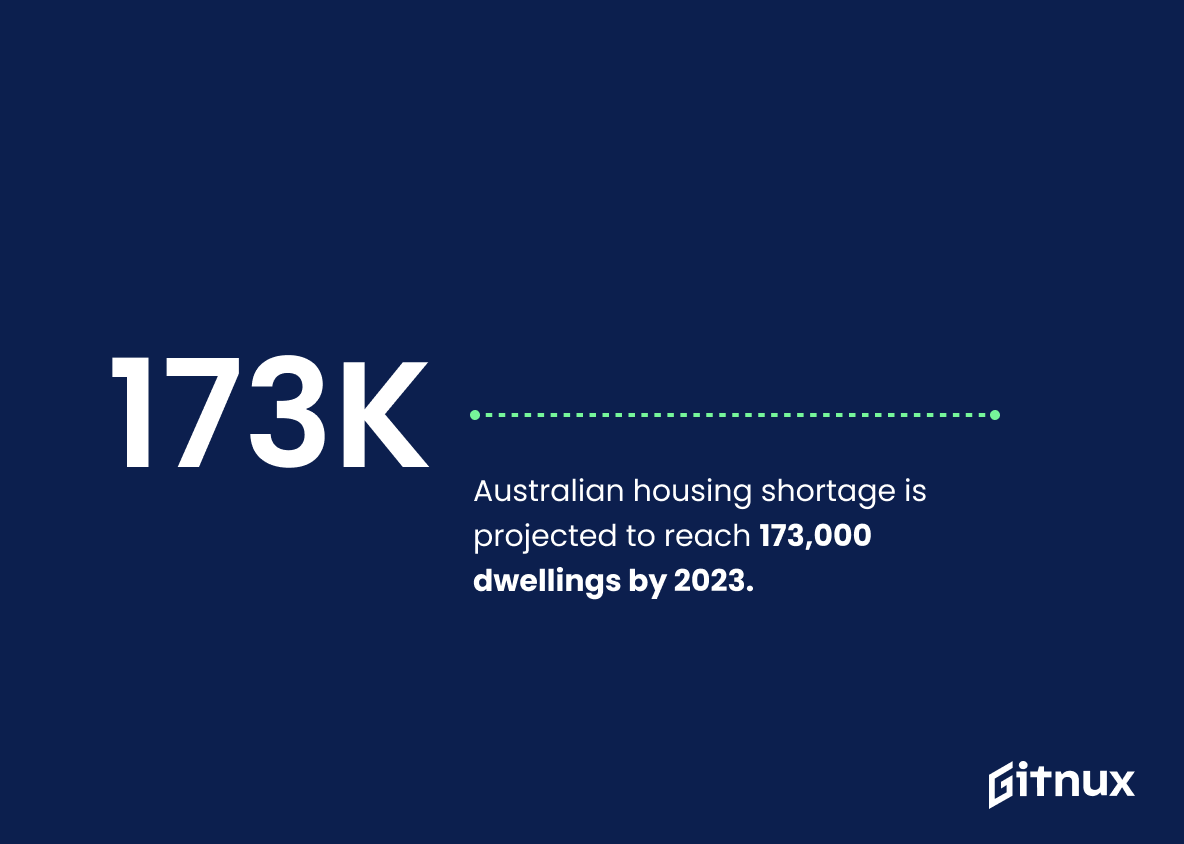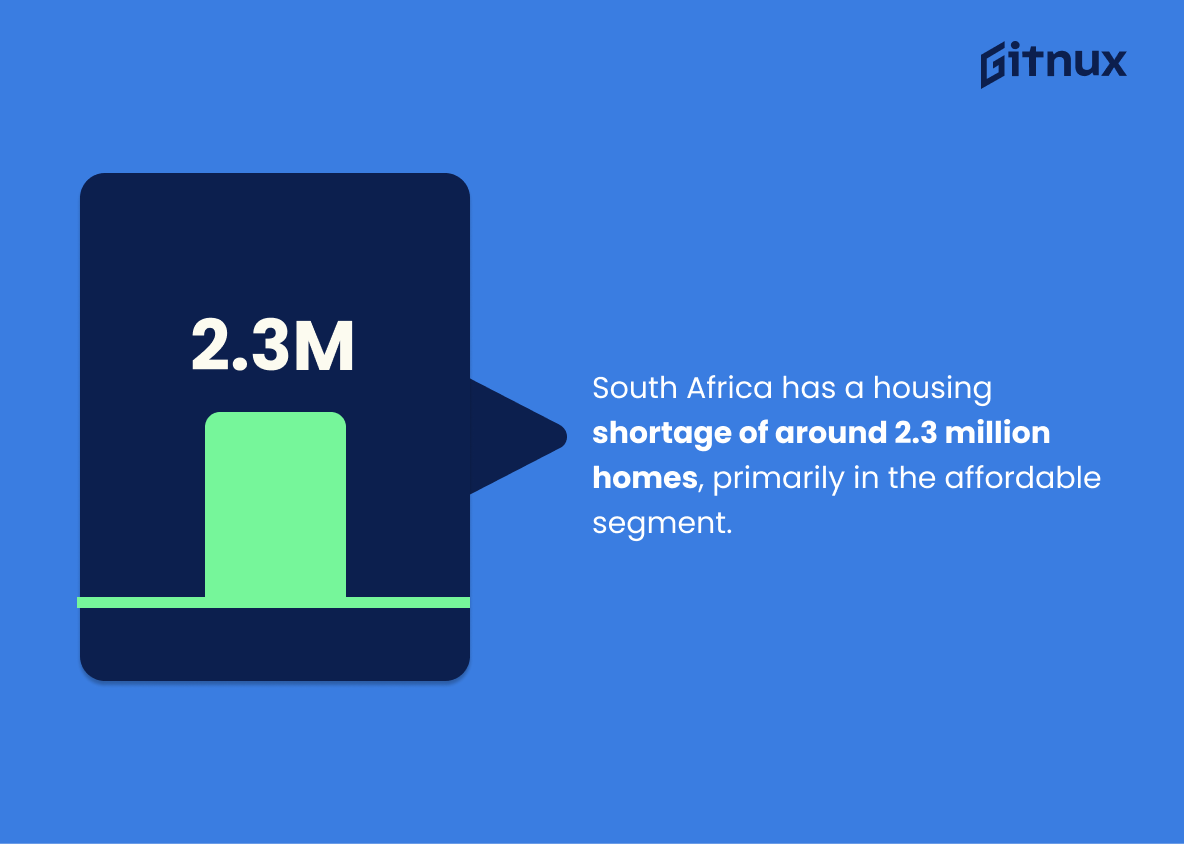With rapid urbanization and population growth globally, housing has become a pressing concern in most major cities around the world. Housing scarcity and affordability are not just buzzwords; they’re real issues affecting millions. In this blog post, we dive into the world of housing shortage statistics, aiming to shed light on the extent of this problem. We’ll explore the numbers behind the scenes, uncover the reasons leading to this crisis, and challenge ourselves to understand the implications for the society we live in. Whether you’re an economist, urban planner, real estate enthusiast, or a concerned citizen, this unraveling of data will give you a more profound understanding of the intricacies of the current housing scenario.
The Latest Housing Shortage Statistics Unveiled
Homelessness in England has increased by 165% since 2010, primarily because of the housing shortage.
Highlighting the shocking surge of homelessness in England due to a 165% increase since 2010 illuminates the dire consequences of the housing shortage. In a post dwelling on Housing Shortage Statistics, crunching this grim reality provides a concrete perspective of the human cost associated with the scarcity of affordable homes. It geometrically deepens the relevance of housing shortage discussions, reminding readers of the pressing issue at hand – lives are quite literally hanging in the balance. Subsequently, it can spark dialogue, influence policy decisions, and inspire actions to tackle the housing crisis with urgency.
There is a housing deficit of about 2 million homes in the Middle East and North Africa region.
Unraveling the severity of the housing shortage in the Middle East and North Africa region, the featured statistic gives more depth to our understanding. A housing deficit of approximately 2 million homes manifests a grave reality that exists beneath the surface. This striking number serves as a testament and an alarm bell, painting a picture of the crisis in vivid strokes. It empowers us to visualize the magnitude of the issue, propelling discussions on probable solutions, reformation strategies, and providing critical data that can influence policy changes. Moreover, this statistic, stamped with its undeniable urgency, adds a layer of global perspective to our blog post, strengthening the overall narrative on the gravity of housing shortages throughout the world.
India may face a housing shortage of approximately 30 million units by 2022.
The impending wave of housing shortage, predicted to be around 30 million units by 2022 for India, paints a stark picture of the enormity of the challenge lying ahead. The heart of this daunting statistic beats impacting the rhythm of a thriving economy. It screams urgency, addressing the mammoth task of satisfying an immense domestic demand for shelter.
Highlighted in a blog post about Housing Shortage Statistics, this number dramatizes the true scale of the housing deficit and the necessary steps needed to cater to the needs of millions. Diving into this statistic enlightens us about the gaps in infrastructure development and encourages proactive strategies to stimulate affordable housing projects.
In a country like India, with its rich diversity and rapidly growing population, such a staggering statistic is not just a number, but a magnifying glass focusing on socio-economic challenges. Debating upon this, the blog post offers a springboard for conversation, motivating informed decisions and effective dialogue.
Ultimately, the reality captured by this statistic serves as a wake-up call, enforcing the need for swift action and innovative solutions to keep pace with the demands of an emerging superpower.
By 2025, California needs to build 3.5 million homes to alleviate its housing shortage.
Painting a vivid picture, the projection that California would require 3.5 million homes by 2025 punctuates the gravity of the housing shortage crisis. This number does not merely represent homes and property, but underscores the pressing reality of families, individuals, and communities struggling to find affordable shelter in the Golden State. It illustrates the scale of the challenge that looms large in not too distant future, and acts as a wake-up call for policymakers, investors, and urban planners to intensify their efforts in resolving the housing crisis. Epitomizing stormy clouds looming over the horizon of housing in California, it beckons urgent, informed and targeted strategies aimed at easing the shortage. It serves as a tangible target and potential measure of success, or otherwise, for proposed solutions to the crisis.
To meet the demand, the United States needs to build 4.6 million new apartments by 2030.
In the tapestry of housing shortage statistics, the thread that draws the most attention is the assertion that the United States must construct an additional 4.6 million new apartments by 2030 to meet escalating demand. This projection not only underscores the urgency of the housing deficit, but also constructs a pathway to resolving it. Its relevance cannot be overstated in a blog post about housing shortage statistics, as it quantifies the magnitude of the looming crisis in tangible terms. This figure ignites a call to action – a blueprint for government planners, developers, and policy makers alike, to mobilize resources and instigate measures necessary to bridge this significant infrastructure gap within the given timeframe. Furthermore, this looming deficit lays bare the profound social and economic implications if left undeterred, cementing its position at the heart of an effective and meaningful discussion about housing shortage statistics.
The U.S. housing market ended 2020 with a 5.5 million unit shortage.
Highlighting the figure of a 5.5 million unit shortage in the U.S. housing market at the close of 2020 sets the tone for a compelling conversation about housing shortage statistics. It paints a significant image of the breadth and scope of the housing shortage crisis striking the very heart of America’s housing story. This figure emphatically underscores the urgency and enormity of the housing issue that touches every metropolitan area across the country, illuminating the compelling need for immediate actions and innovative solutions in the housing sector. This revelation in numbers also serves as a lens for the readers to survey the magnitude of the issue at the national level, thereby making them comprehend its direct and indirect impact on social and economic factors such as homelessness, housing affordability, market prices, and demographic shifts.
Sub-Saharan Africa has about a 56 million unit housing shortage.
In the realm of housing shortage statistics, this stark revelation of Sub-Saharan Africa’s deficit of approximately 56 million housing units paints a dramatic picture. It places a critical spotlight on a region grappling with significant housing shortfalls, unmasking a profound challenge that transcends the bricks and mortar of physical structures. The repercussions pulse through variables such as population density, socio-economic factors, and homelessness. It underscores the magnitude and urgency of housing solutions needed in Sub-Saharan Africa’s storyline, providing an essential data-point for comprehensive global conversations regarding housing shortages. This numeric thread, woven into the broader fabric of housing scarcity discourse, brings to the fore the dire straits of an entire region, stirring readers and policy-makers to thoughtful action.
Brazil faces a housing deficit of 7.78 million units, predominantly affecting low-income families.
To paint a vivid statistic canvas, one must dive into the depths of real-world implications. Take, for instance, Brazil’s shortage of 7.78 million housing units, a gap that predominantly haunts the lives of low-income families. Anyone engaged in the world of Housing Shortage Statistics would find this an alarming shade of red, mainly due to its profound socio-economic implications. This number isn’t merely a statistic; it’s a reflection of countless families struggling to find shelter every night. When measuring the severity and understanding the breadth of the global housing crisis, these meaningful insights from one of the most populated countries are practically unignorable. A critical puzzle piece, it helps to form a constructive debate around possible solutions and preventative measures in housing policies.
In Germany, there is a shortage of around 1.9 million affordable housing units.
Diving into the fascinating world of housing shortage statistics, the revelation of a staggering 1.9 million affordable housing unit shortage in Germany sends a powerful shockwave. This number gives a tangible dimension to Germany’s mounting housing crisis, punctuating the severe reality countless individuals face when searching for affordable accommodation. More than just a statistic, it represents a societal issue where the fundamental need for secure and financially accessible housing isn’t met. This revelation broadens the conversation’s scope, pushing for exploration of structural, policy, and market factors contributing towards such an alarming shortage. Consequently, it fosters a deeper understanding and prompts the search for long-term solutions to remedy this pressing issue. A statistic in isolation, it is not, but a call-to-action, it most certainly is.
There is a shortage of 230,000 homes in Ireland, requiring a minimum of 33,000 new homes to be built each year till 2040.
Painting the canvas of Ireland’s housing predicament, the color of numbers unveils a stark reality. Picture this – a gaping chasm of 230,000 homes, juxtaposed against a clock that ticks away relentlessly towards the year 2040. This is the dilemma Ireland finds itself grappling with, in the very heart of our blog post about Housing Shortage Statistics.
The bricks and mortar of this story are these critically important numbers. They show the magnitude of the housing crisis in Ireland and chart out a roadmap for action. As if cracking a cryptic code, we need at least 33,000 new homes sprinkling across the Irish landscape annually till 2040 if we endeavor to bridge this daunting divide.
These figures are not just statistics. They echo the urgency of Ireland’s housing crisis, convey the scale of the challenges ahead, and act as a spotlight on policymakers and those responsible for housing provision. Moreover, they empower readers, like yourselves, to gauge the efforts required and question the pace of progress as we endeavour to house people in the Emerald Isle.
Therefore, this numeric narrative forms the backbone of our discourse on housing shortage, driving home the gravity of the situation, drawing attention to where solutions are needed, and setting the milestone of success for strategic planning and remediation efforts.
China estimates it will need 800 million new homes by 2025 to tackle urban housing shortage.
In stooping down to scrutinize a gem of a statistic like ‘China anticipates a demand for 800 million new homes by 2025 to deal with urban housing shortage,’ we unearth the magnitude and urgency of the housing crisis, one of the substantial implications of swift urbanization. This number gives rise to palpable vibrations, resonating far beyond China’s borders, indicating the colossal task architecture, construction industries, and public policies must grapple with- within an unrelenting timeframe. Dissecting this, one cannot help being struck by the potential economic, social, and environmental ripple effects: from burgeoning construction and relatedjob markets, potential rises in the costs of living, to the task of sustainable city planning. In the realm of housing shortage statistics, this data point towers like a skyline, casting an enormous, instructional shadow on all those invested in understanding this urgent global issue.
UK needs to build 340,000 homes per year until 2031 to counter the housing shortage.
Imagine standing in a concert with 340,000 attendees, each person representing a home that needs to be constructed every year until 2031 to meet the UK’s housing demands – an image colossal enough to stir deep understanding and concern.
With this astounding figure underpinning the UK’s housing predicament, it brings to life the severity and urgency of the housing shortage crisis the country is currently battling against. This statistic, positioned in the narrative of our blog post, not only asserts the gravity of the issue, but also underscores the requirement for immediate and decisive action – whether that be radical policy changes, construction innovation, or increased investment.
Bearing witness to the scale of housing construction required, readers can grasp and appreciate the urgency of the problem. More so, it encourages dialogue, fosters public engagement, and raises awareness on how important it is for every citizen, policy maker and stakeholder to step up and be an active part of the answer.
The sheer scale of this data might be overwhelming for some; it can instigate concern, and yet, it can also inspire change. This statistic is a clarion call to turn crisis into an opportunity, and channels our focus on the solutions to this important societal issue.
Australian housing shortage is projected to reach 173,000 dwellings by 2023.
Unraveling the tangled threads of Australia’s housing dilemma, the projected shortage of 173,000 dwellings by 2023 etches a startling silhouette of urgency against the skyline of this nation’s future. This gnawing shortfall underscores the gravity of the housing crisis, serving as both a gauntlet and vanguard for policymakers, real estate developers, and potential property owners alike. Painted in numbers as stark as these, the severity of Australia’s accommodation quandary leaps to the fore in a blog post exploring housing shortage statistics. As this numerical ink dries and these implications take full form, it becomes clear that real-time strategies and effective political decisions are needed to shore up the housing sector and navigate our way to safer shores.
South Africa has a housing shortage of around 2.3 million homes, primarily in the affordable segment.
Undeniably, the adversity of the housing shortage crisis in South Africa, highlighted by a staggering deficit of approximately 2.3 million homes, primarily within the affordable bracket, serves as a glaring indicator of the global housing crisis. Through illuminating the extent of the issue in this particular region, this stat brings the enormity of the problem into sharp focus within the realm of Housing Shortage Statistics. The relevance of this number in this specific context is not simply about figures on a page, but rather underscores the harsh realities faced by millions in their quest for a basic human need – affordable shelter. This, in turn, stirs both thought and action oriented towards viable solutions for housing shortages across the globe.
Conclusion
A deep dive into housing shortage statistics paints a vivid picture of a pressing issue that leaves millions without adequate shelter. Current trends indicate a substantial need for reactive initiatives and targeted policies. Addressing this shortage is not only beneficial for individuals but also pivotal for community development and economic growth. As we move forward, it becomes increasingly vital to increase awareness, challenge traditional approaches, and strive for sustainable and inclusive housing solutions. In real estate, knowledge is power, and these statistics arm both industry leaders and average consumers with the insights needed to effect real change.
References
0. – https://www.www.worldbank.org
1. – https://www.www.caixabankresearch.com
2. – https://www.www.housingfinanceafrica.org
3. – https://www.www.iwkoeln.de
4. – https://www.blogs.worldbank.org
5. – https://www.www.esri.ie
6. – https://www.www.business-standard.com
7. – https://www.www.nar.realtor
8. – https://www.www.urban.org
9. – https://www.www.crisis.org.uk
10. – https://www.www.weareapartments.org
11. – https://www.www.mckinsey.com
12. – https://www.www.rics.org
